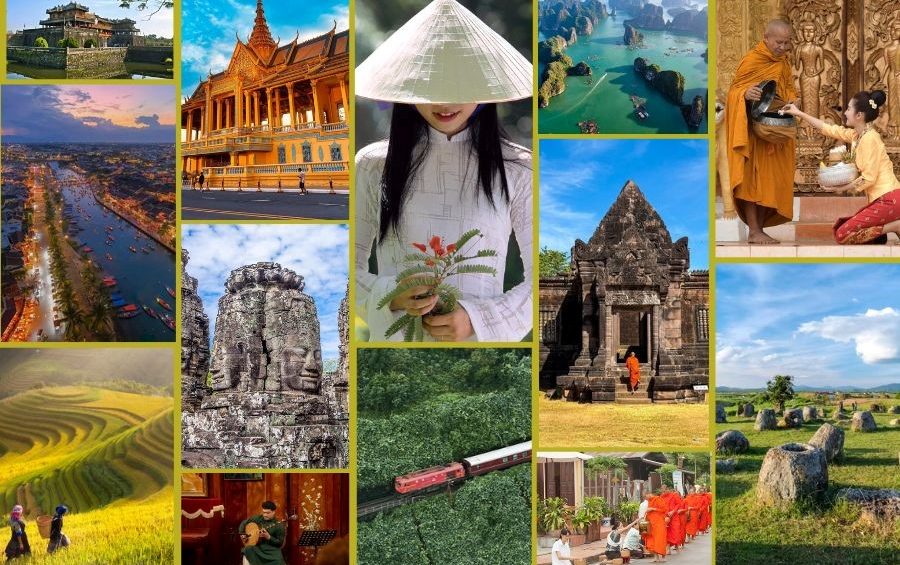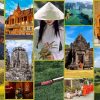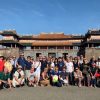Indochina – comprising Vietnam, Cambodia, and Laos – stands at a pivotal moment in its post-pandemic tourism recovery. For 2025, the region is not just measuring recovery speed but defining a new era of growth driven by sustainability, high-value experiences, and profound cultural immersion.
This report provides a strategic overview of the key factors shaping the 2025 travel landscape, from major tourism traffic statistics to evolving consumer preferences. Crucially, we will examine the significant milestone in heritage protection – namely, the anticipated addition of a new UNESCO Natural Heritage site – and detail the emerging trends that are set to redefine the traveler experience across these three dynamic nations.
Discover more MICE events and tours in Vietnam. Leave us a message and our team will get in touch with you soon.
UNESCO World Heritage in Indochina 2025
On July 12, 2025, at the 47th session of the UNESCO World Heritage Committee held in Paris, the capital of the French Republic. Following this session, the three countries, Vietnam, Cambodia, and Laos, each had one new UNESCO heritage site inscribed.
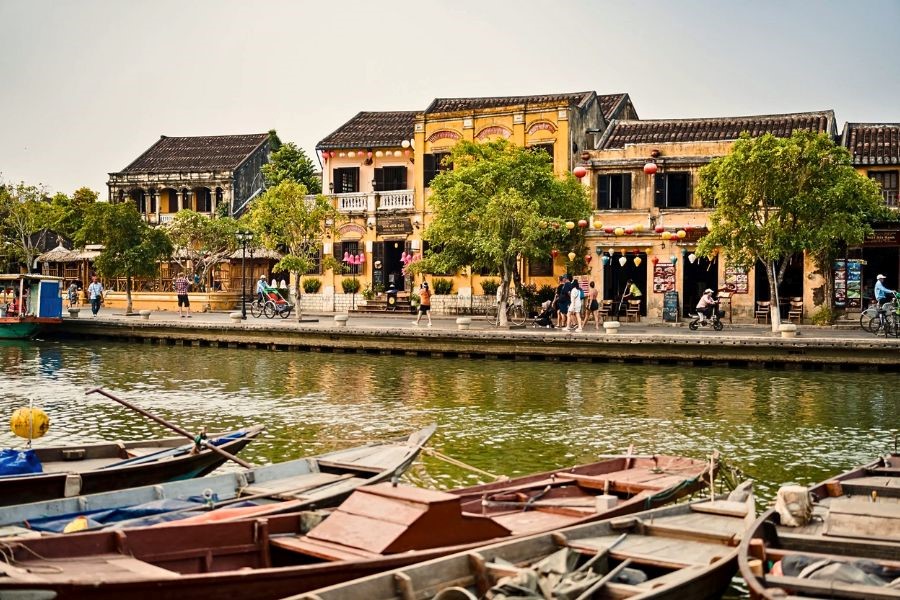
List of UNESCO heritage sites in Vietnam
Vietnam’s heritage portfolio currently shines with 9 UNESCO-recognized jewels, comprising 6 cultural sites, 2 natural sites, and 1 mixed site. The newly recognized site is the Yen Tu – Vinh Nghiem – Con Son, Kiep Bac Complex of Monuments and Landscapes.
| No. | Site Name | Type | Brief Description |
| 1 | Complex of Huế Monuments | Cultural | The imperial capital of Vietnam’s last feudal dynasty (the Nguyễn Dynasty), encompassing the Citadel, Imperial City, Forbidden City, and various royal tombs. |
| 2 | Ha Long Bay – Cat Ba Archipelago | Natural | Famous for thousands of limestone karsts and islands covered in lush vegetation. |
| 3 | My Son Sanctuary | Cultural | The former religious and political center of the Champa Kingdom, featuring over 70 Hindu temple structures built from the 4th to 13th centuries. |
| 4 | Hoi An Ancient Town | Cultural | A remarkably well-preserved Southeast Asian trading port from the 15th to 19th centuries, reflecting indigenous and foreign cultural influences (Chinese, Japanese, European). |
| 5 | Phong Nha – Ke Bang National Park | Natural | Home to the oldest and largest karst cave system in Asia, including Sơn Đoòng Cave, recognized for its geological formations and biodiversity. |
| 6 | Central Sector of the Imperial Citadel of Thang Long | Cultural | A series of relics and archaeological sites representing a continuous center of power in Vietnam for nearly 13 centuries. |
| 7 | Citadel of the Ho Dynasty | Cultural | A large, square-shaped citadel built in the late 14th century, noted for its impressive stone construction techniques from ancient East Asia. |
| 8 | Trang An Landscape Complex | Mixed (Cultural & Natural) | Vietnam’s first mixed site, featuring dramatic limestone karst peaks, flooded valleys, and archaeological evidence of human habitation dating back 30,000 years. |
| 9 | Yen Tu – Vinh Nghiem – Con Son, Kiep Bac Complex of Monuments and Landscapes | Cultural | The birthplace and historical center of the Trúc Lâm Zen Buddhism tradition, founded in the 13th century by the Trần Dynasty Kings. |
List of UNESCO heritage sites in Cambodia
Cambodia currently possesses five UNESCO Cultural World Heritage Sites. The new inscribed site is the Cambodian Memorial Sites: From Centres of Repression to Places of Peace and Reflection, which comprises three locations: the Tuol Sleng prison and Choeung Ek killing fields in Phnom Penh, and the M-13 prison in Kampong Chhnang province.
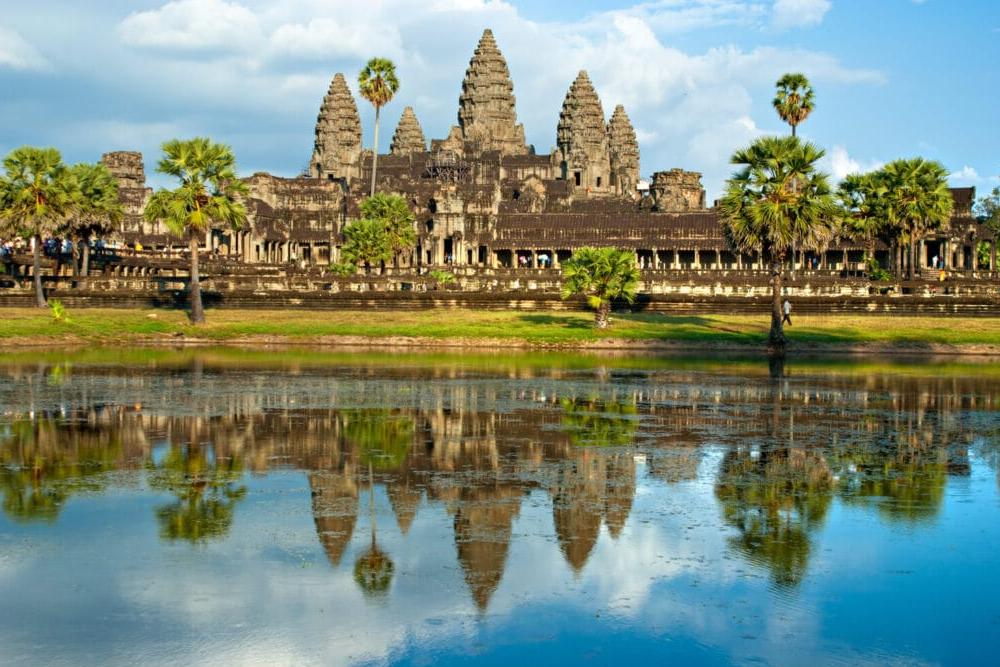
| No. | Site Name | Type | Brief Description |
| 1 | Angkor | Cultural | One of the world’s largest archaeological sites and the former capital of the Khmer Empire, featuring the iconic Angkor Wat temple. |
| 2 | Temple of Preah Vihear | Cultural | A magnificent 11th-century Hindu temple dedicated to Shiva, perched dramatically on the edge of a plateau in the Dângrêk Mountains. |
| 3 | Temple Zone of Sambor Prei Kuk, Archaeological Site of Ancient Ishanapura | Cultural | The former capital of the Chenla Kingdom (7th century), featuring over 100 temples with unique circular and octagonal designs that predate the Angkorian style. |
| 4 | Koh Ker: Archaeological Site of Ancient Lingapura or Chok Gargyar | Cultural | A remote jungle site and briefly the Khmer Empire’s capital, known for the striking, seven-tiered pyramid temple, Prasat Thom. |
| 5 | Cambodian Memorial Sites: From Centres of Repression to Places of Peace and Reflection | Cultural | A serial nomination commemorating the victims of the Khmer Rouge regime, including the Tuol Sleng Genocide Museum (S-21), the Choeung Ek Genocidal Center (The Killing Fields), and the former M-13 prison. |
List of UNESCO heritage sites in Laos
Laos has three cultural heritage sites, and as of 2025, it added one natural heritage site, the Hin Nam No National Park. This park is a transboundary extension of the Phong Nha-Ke Bang National Park in Vietnam, extending into Hin Nam No in Laos.
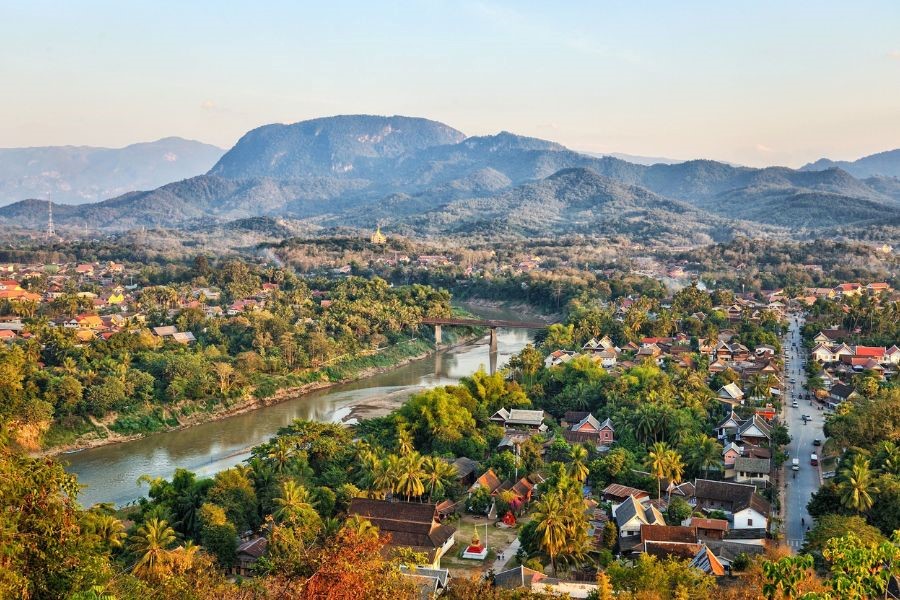
| No. | Site Name | Type | Brief Description |
| 1 | Town of Luang Prabang | Cultural | An exceptionally well-preserved townscape that uniquely fuses traditional Lao architecture with 19th and 20th-century French colonial urban structures. |
| 2 | Vat Phou and Associated Ancient Settlements within the Champasak Cultural Landscape | Cultural | A pre-Angkorian Hindu temple complex dating back to the 10th century, dedicated to the Hindu god Shiva, set in a meticulously planned cultural landscape. |
| 3 | Megalithic Jar Sites in Xiengkhuang – Plain of Jars | Cultural | An archaeological wonder featuring over 2,100 massive tubular stone jars used for Iron Age funerary practices, scattered across a wide plateau. |
| 4 | Hin Nam No National Park | Natural | Inscribed as a transboundary extension to Vietnam’s Phong Nha-Ke Bang National Park. This karst landscape boasts spectacular limestone formations, rich biodiversity, and one of the world’s largest functioning underground river systems (Xe Bang Fai Cave). |
Indochina Tourism Overview
- Vietnam welcomed 14 million international visitors in the first eight months of 2025.
- Its recovery rate is a spectacular 98% compared to 2019, leading the Southeast Asian region (Source: Tempo of Indonesia).
- Laos recorded over 2 million tourist arrivals, marking a 28% increase year-on-year.
- Cambodia received 84 million international visitors, an increase of 16.1% year-on-year.
- These numbers collectively indicate a steady upward trajectory for the region, with Vietnam driving the growth.
- Vietnam’s Top 10 Markets: China, South Korea, Taiwan, the United States, Japan, Cambodia, India, Australia, Russia, and Malaysia.
- Laos’ Top Markets: Led by Thailand, China, and Vietnam, with European arrivals (France, Russia, UK) growing by about 20%.
- Cambodia’s Top Markets: Led by Thailand, China, and Vietnam, while Western markets (US, UK, France) also showed notable gains.
- Intra-ASEAN travel remains the foundation for both Laos and Cambodia, but demand from Europe and other long-haul markets is becoming an increasingly vital source of growth.
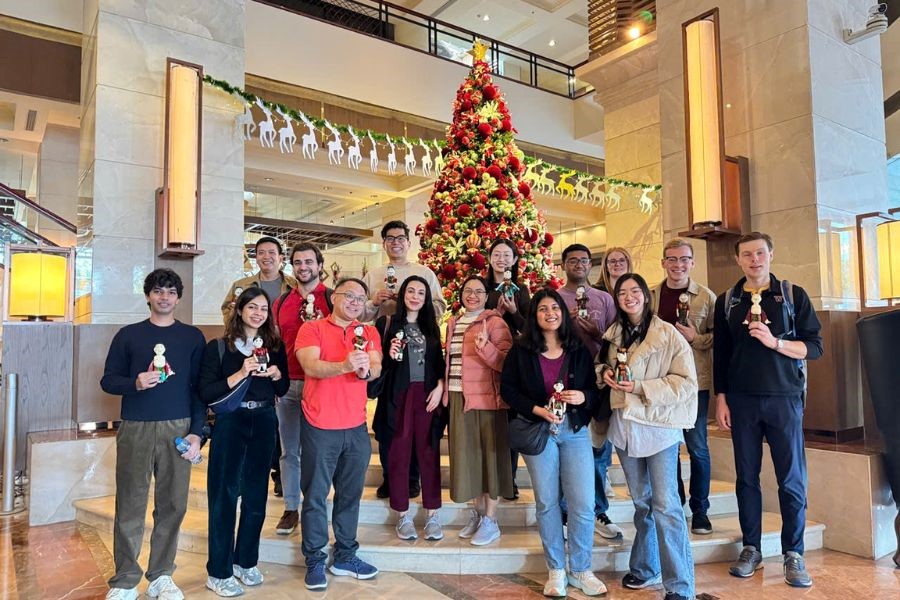
Travel Preferences of Tourists to Indochina
Key trends driving the Indochina tourism sector in 2025 can be summarized as:
The Rise of Purposeful & Sustainable Travel
Travelers are increasingly seeking meaningful experiences that benefit local communities and the environment. This is a major driver of new trends in the region.
- High-end travelers are seeking resorts that focus on sustainability, local sourcing, and holistic wellness programs that incorporate traditional healing (e.g., in Laos and Vietnam).
- A strong demand for deeper cultural immersion, often involving extended stays in rural areas like the villages of Ha Giang (Vietnam) or Luang Prabang province (Laos). This includes activities like traditional cooking classes, craft workshops, and trekking with local guides.
- The golden age of train travel is returning, with travelers choosing scenic train journeys as a more eco-friendly and immersive alternative to flying, such as the new high-end rail routes in Vietnam.
Focus on Nature, Adventure, and Hidden Gems
While the classic spots remain popular, travelers are looking to escape crowds and find more adventurous, off-the-beaten-path experiences.
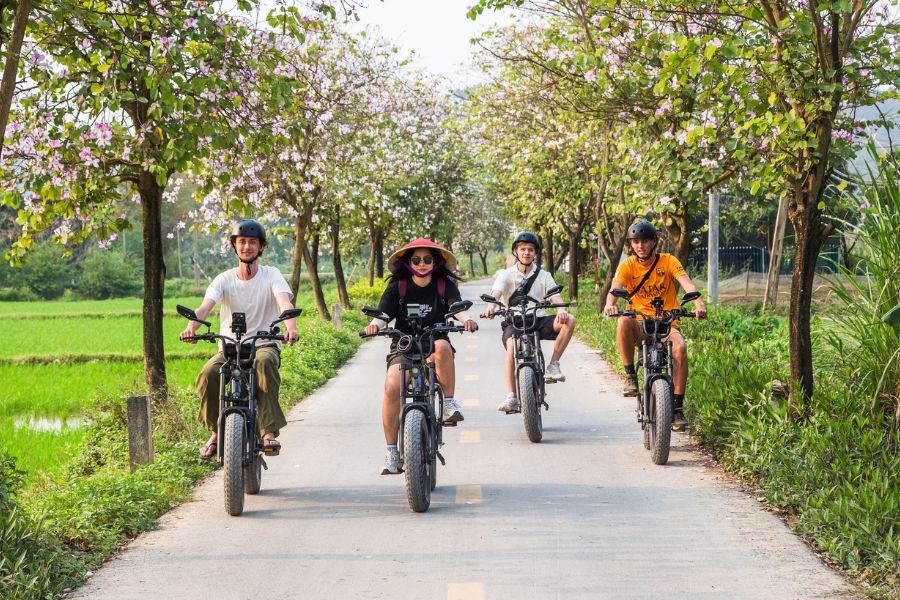
- Adventure Tourism: Strong demand for activities like trekking (Sapa, Ha Giang, Cardamom Mountains in Cambodia), kayaking/tubing (Vang Vieng, Laos), and cave exploration (Phong Nha-Ke Bang, Vietnam).
- “Coolcations” & Mountain Retreats: Driven by a desire for cooler climates and unique experiences, destinations in higher elevations like Sapa (Vietnam) and Da Lat (Vietnam) are gaining significant popularity.
- Budget Travel Mecca: Laos has gained attention as one of Southeast Asia’s new top budget destinations for 2025, thanks to its incredibly low daily costs and tranquil, untouched landscapes.
Key Tourist Attraction Trends
- Gastronomic Immersion: Food tourism is a central part of the Indochina experience. Travelers actively seek out street food tours and hands-on cooking classes to dive deep into local cuisine.
- Cultural Preservation: There’s an interest in visiting cultural festivals and artisan villages (like Bat Trang ceramics or Hoi An lantern workshops) to engage with and support traditional local crafts.
- Multi-Country Journeys: The classic Vietnam-Cambodia-Laos itinerary remains highly popular, often customized with luxury and adventure components to cover multiple landscapes in one trip.
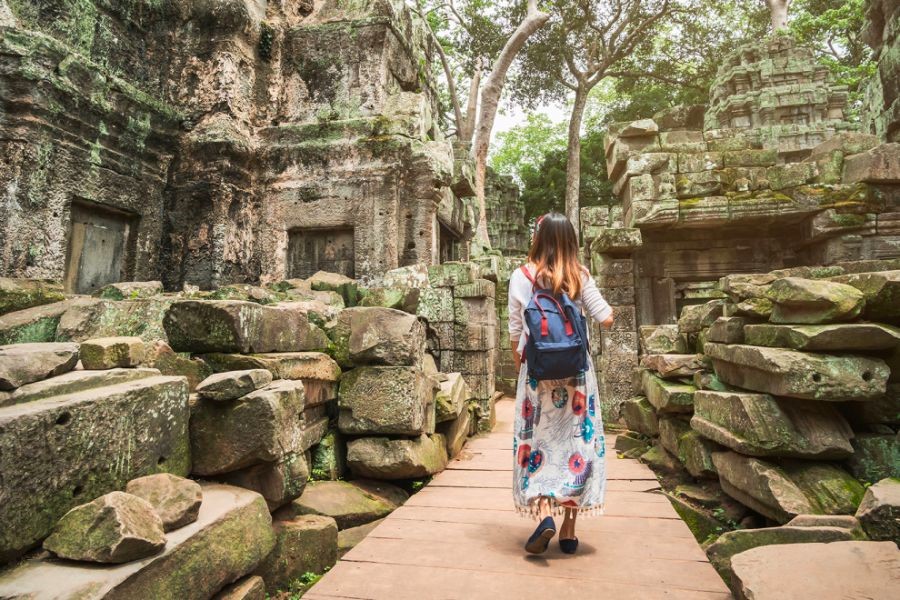
Popular Destinations and Preferred Activities
| Country | Classic Must-Visit Destinations | Emerging/Trend-Driven Spots | Favorite Activities |
| Vietnam | Hanoi, Ho Chi Minh City (Saigon), Ha Long Bay, Hoi An (Ancient Town), Hue (Imperial City). | Ninh Binh (for its “inland Ha Long Bay” scenery), Ha Giang Loop (motorbike adventure), Da Nang (modern base for Central Vietnam), Phu Quoc (luxury beach villas). | Street Food Tours (Hanoi/Saigon), Overnight Cruises (Ha Long/Lan Ha Bay), Cooking Classes, Trekking in Sapa, Exploring the Mekong Delta. |
| Cambodia | Siem Reap (Angkor Wat), Phnom Penh (Historical landmarks). | Koh Rong & Koh Rong Samloem (Islands), Kampot (Riverside town), Cardamom Mountains (Eco-trekking). | Street Food Tours (Hanoi/Saigon), Overnight Cruises (Ha Long/Lan Ha Bay), Cooking Classes, Trekking in Sapa, Exploring the Mekong Delta. |
| Laos | Luang Prabang (Spiritual center, alms-giving ceremony), Vientiane (Capital). | Vang Vieng (Adventure activities, limestone karsts), Pakse/4000 Islands (Southern Laos), Hin Nam No National Park (New natural heritage site). | Street Food Tours (Hanoi/Saigon), Overnight Cruises (Ha Long/Lan Ha Bay), Cooking Classes, Trekking in Sapa, Exploring the Mekong Delta. |
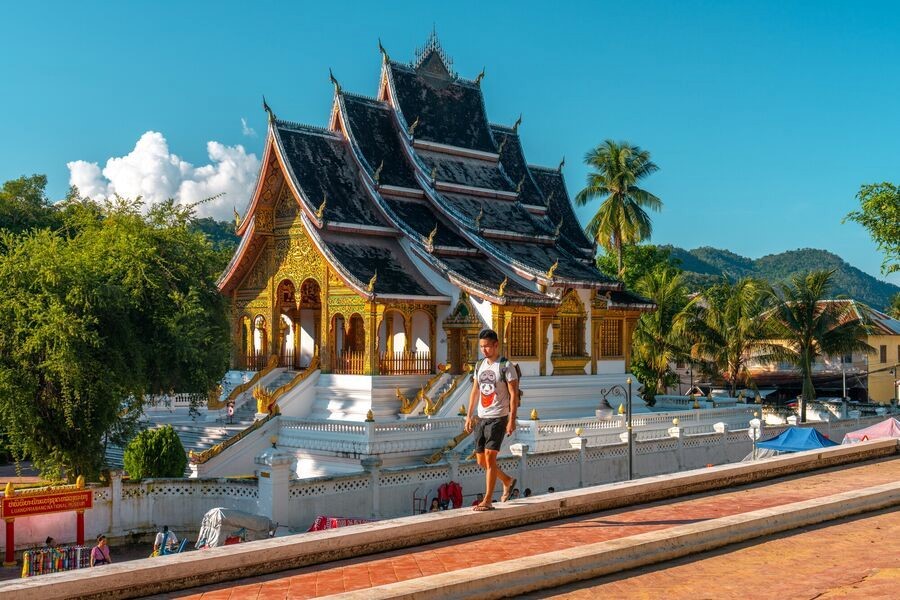
Conclusion
Indochina in 2025 is emerging as a dynamic and richly rewarding destination, balancing rapid tourism growth with a renewed focus on cultural and natural preservation. Ultimately, Indochina offers more than just sightseeing. It presents a chance to witness nations actively celebrating their heritage while building a resilient, responsible, and exciting future for global tourism.
Explore more suggestions and updates for Vietnam & Indochina Travel on our Website | Facebook | Instagram.

